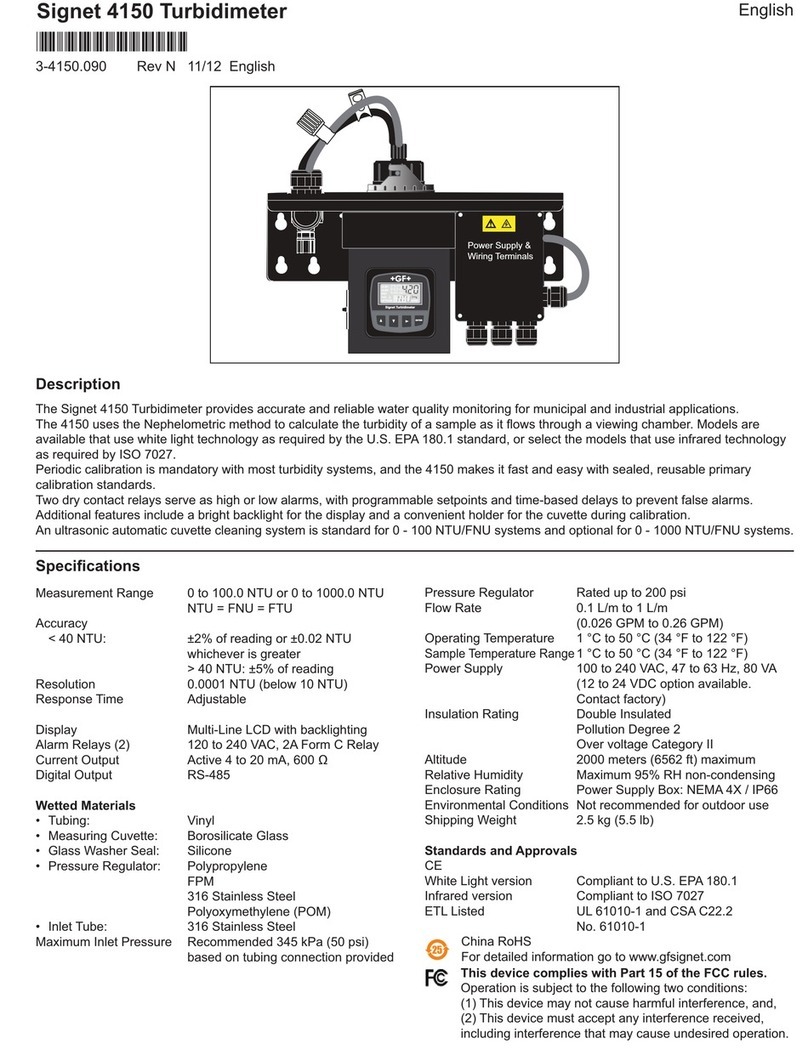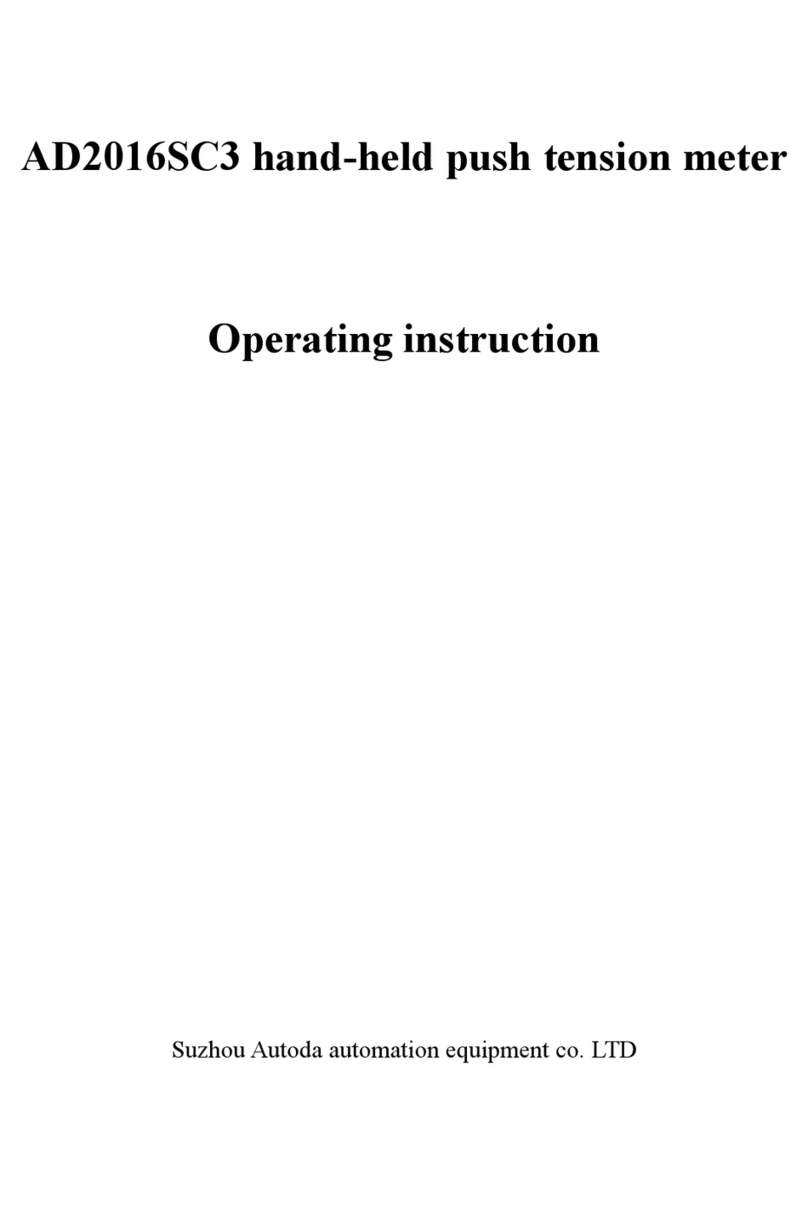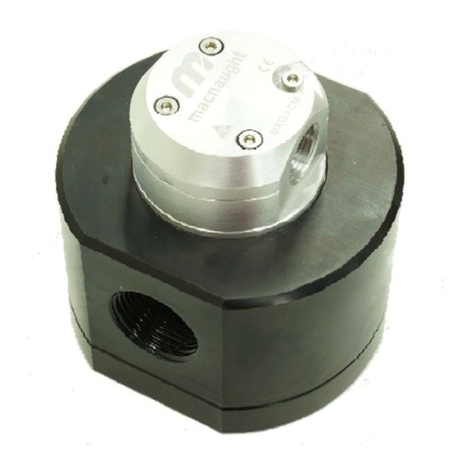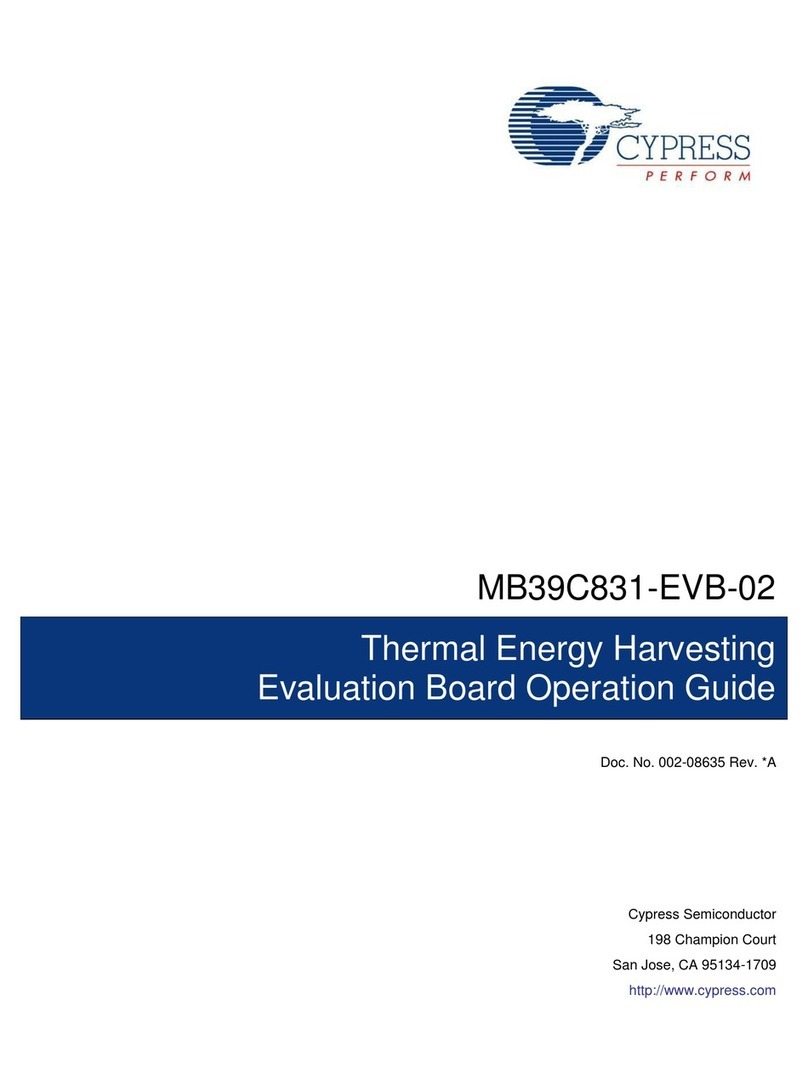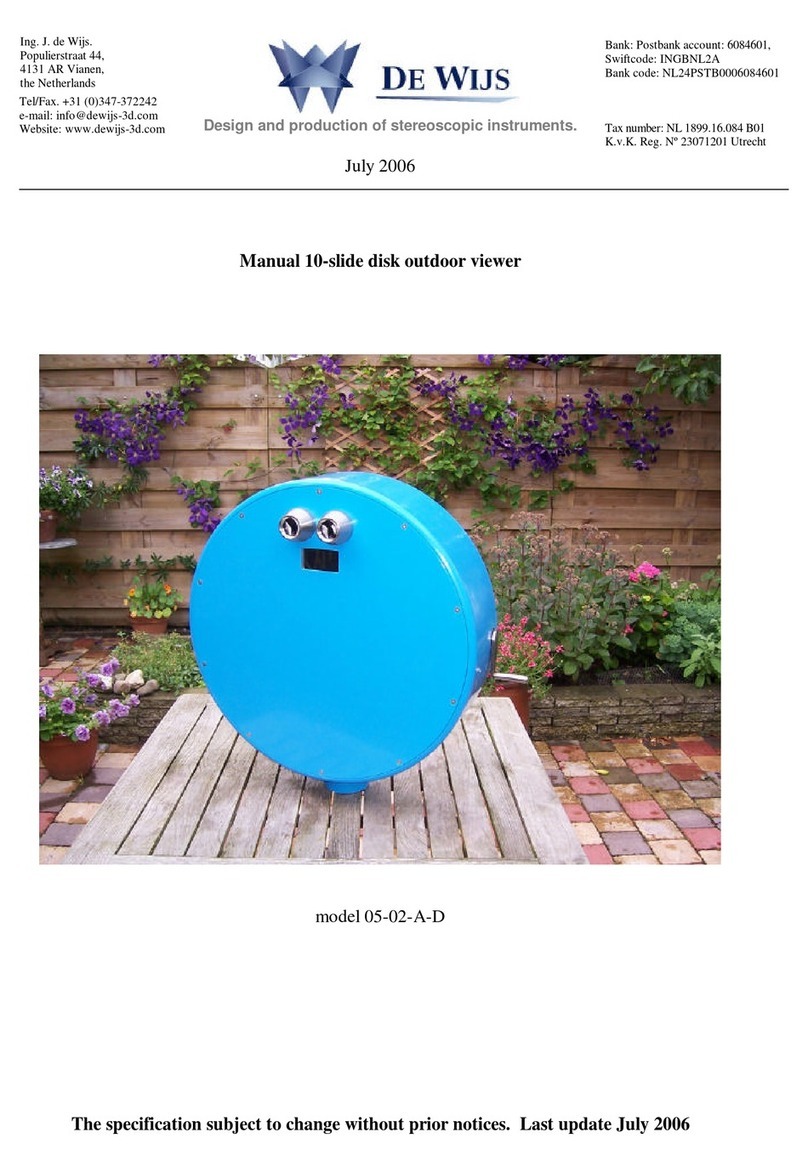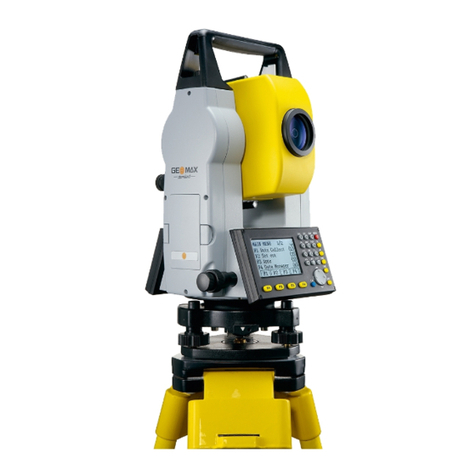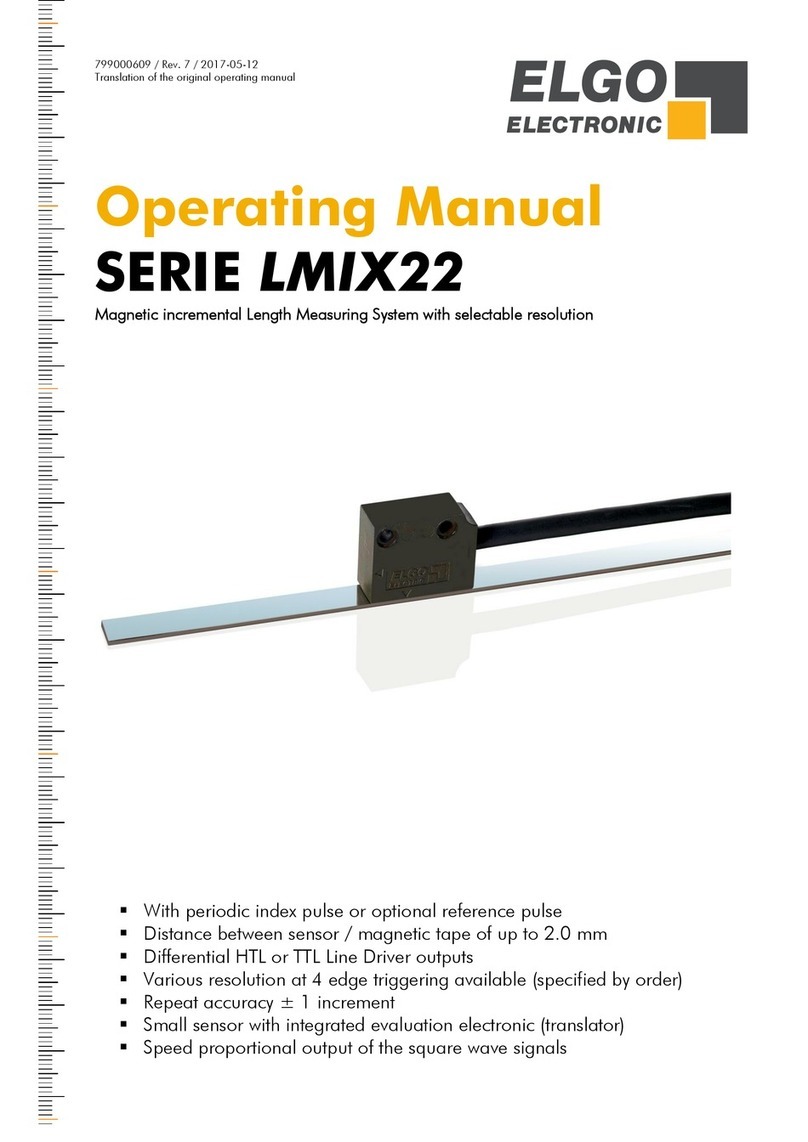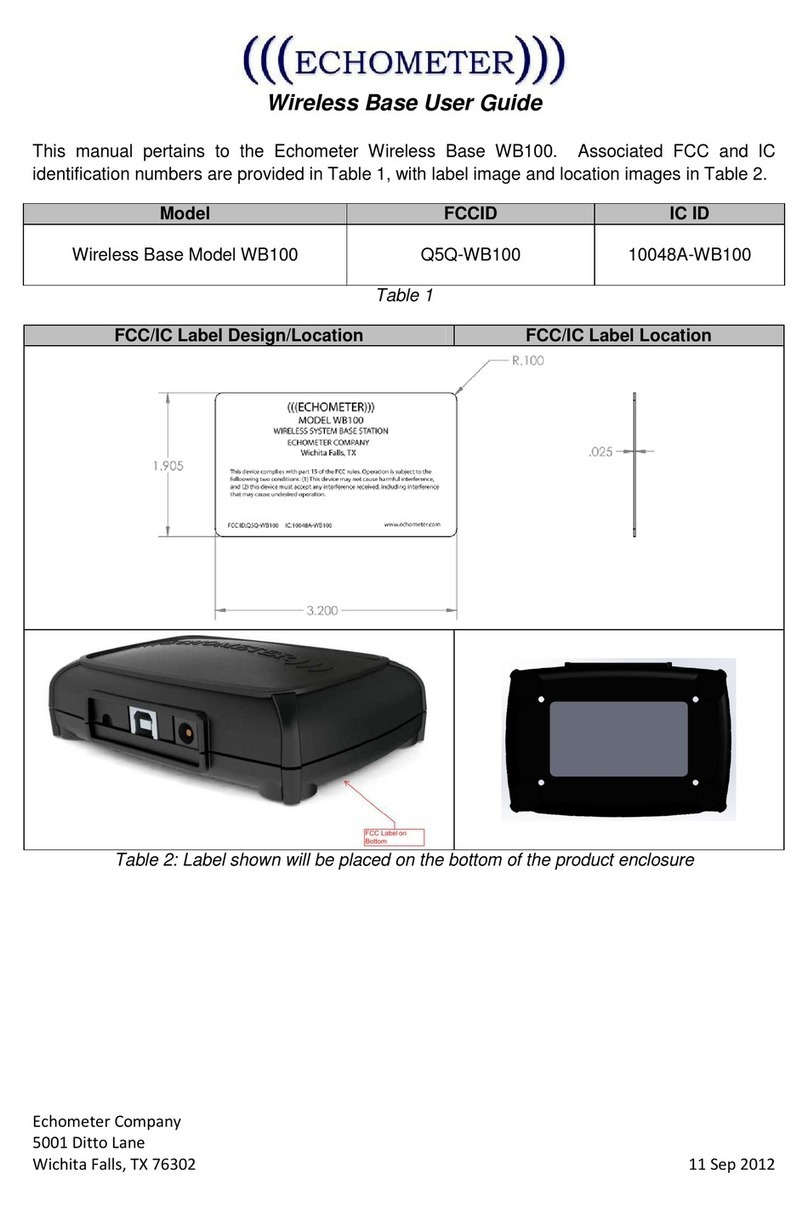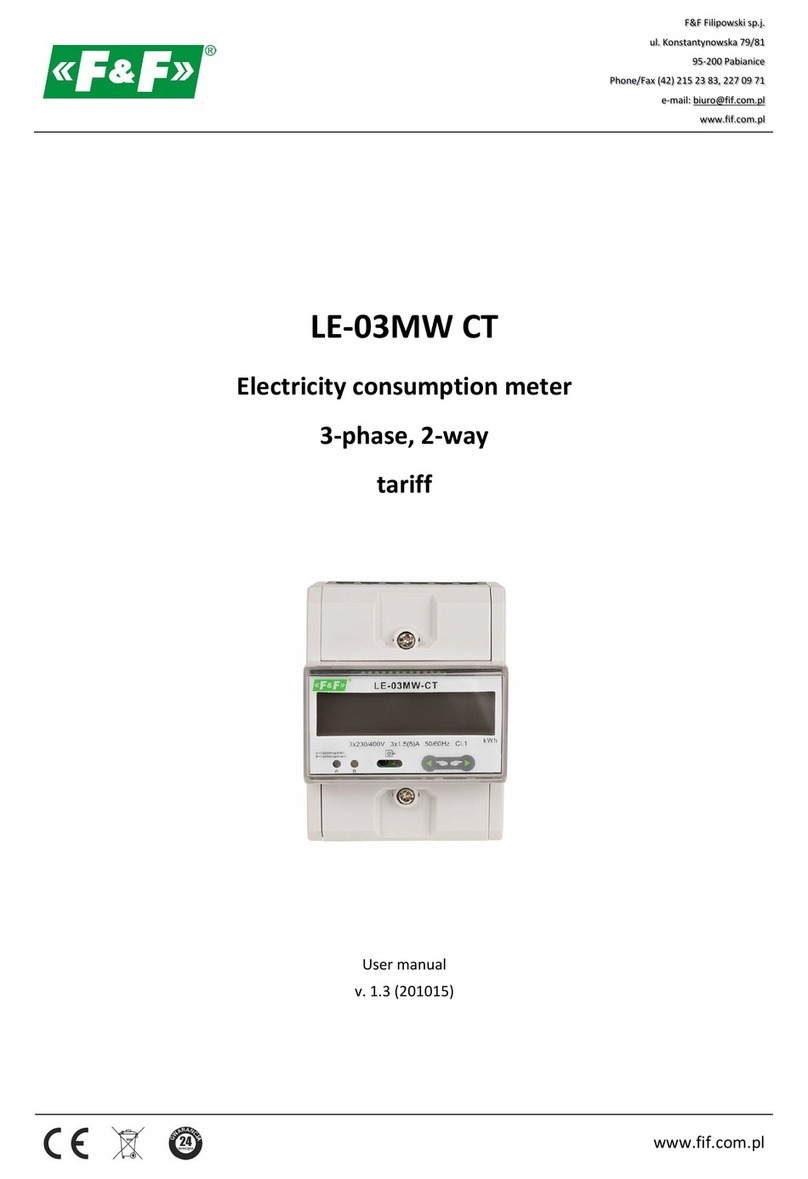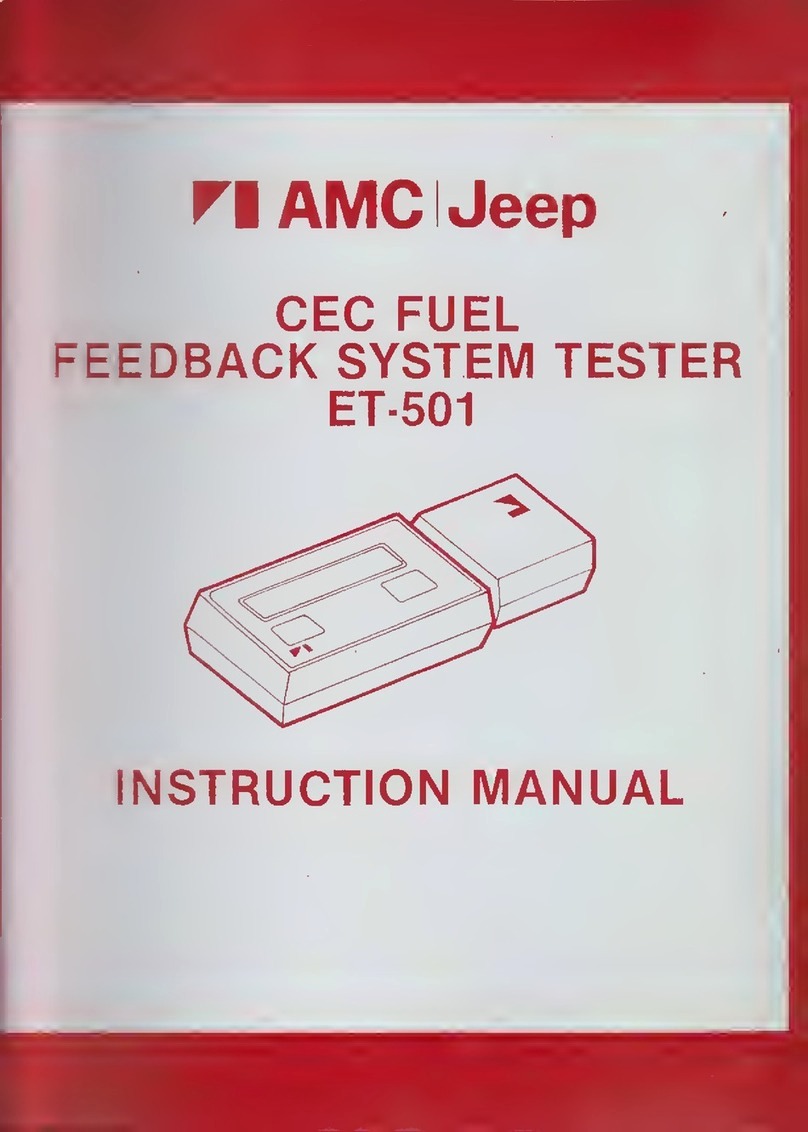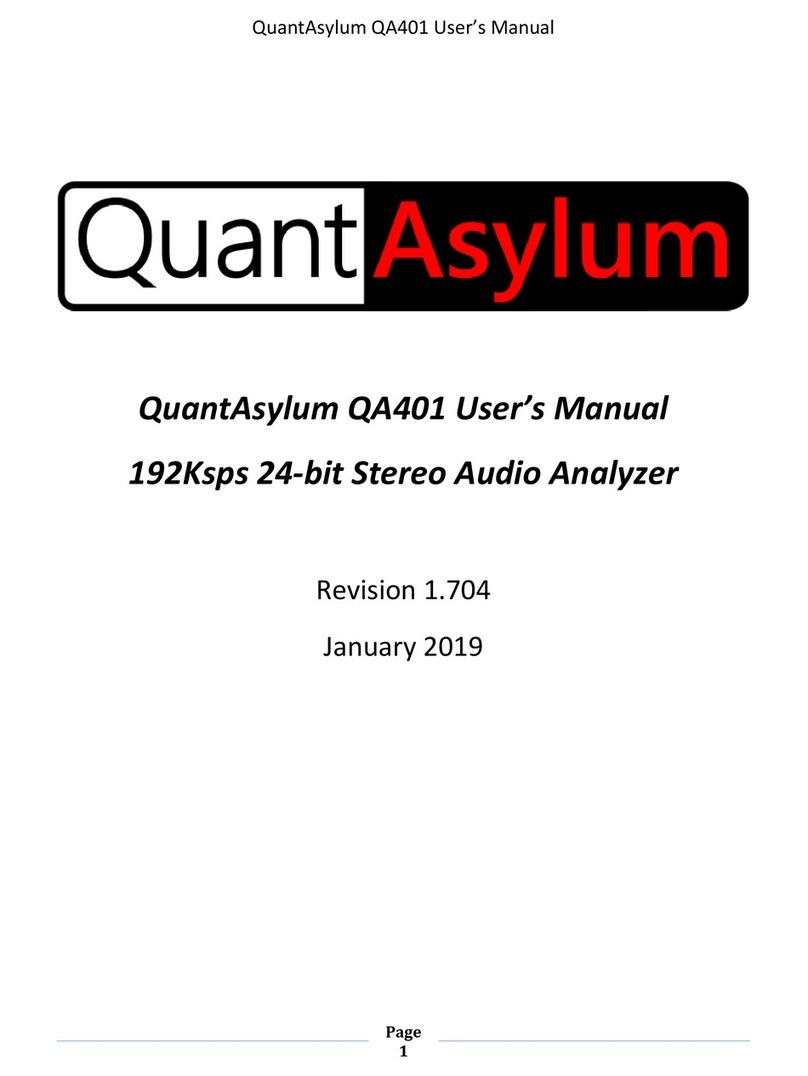Fizoptika VG910H Technical manual

VG910 SERIES
FIBER OPTIC GYROSCOPES
Information Guide
Output Model Name
Key Features
Main Extension
differential VG910H
Low noise and durable, 500 g
1
Extremely robust, 1200 g
125C
Operating at +125°C
single-ended VG910F
Built-in bias calibration
1
Highly reliable and robust
LN
Enhanced performance
digital
VG910D
RS232 / RS422

www.fizoptika.com FIZOPTIKA Fiber Optic Gyroscopes. VG910 series. Information Guide Version #8 of 25/05/2018 Page 2 of 20
Table of Contents
1. Introduction............................................................................................................................3
1.1. Scope of this Information Guide ........................................................................................................ 3
1.2. Product Description ........................................................................................................................... 3
1.3. Outline Dimensions and Axes Definition ........................................................................................... 3
1.4. Product Specifications....................................................................................................................... 4
1.5. Essential ............................................................................................................................................ 5
1.6. Electrical Characteristics ................................................................................................................... 5
1.6.1. Output Voltage of the Differential Output .....................................................................................................................8
1.6.2. Output Voltage of the Single-ended Output .................................................................................................................8
2. Mounting Guidelines .............................................................................................................9
2.1. Screw Mounting Guidelines............................................................................................................... 9
2.2. Cable Routing.................................................................................................................................... 9
3. Open-loop Fiber Optic Gyroscope........................................................................................9
3.1. Principle of Operation ........................................................................................................................ 9
3.2. Embedded Design ............................................................................................................................. 9
3.3. Analog Electronics Board ................................................................................................................ 11
3.4. Analog Output UΩ = SF∙Ω ................................................................................................................ 11
4. Typical Test Data .................................................................................................................12
4.1. Test data for VG910H...................................................................................................................... 12
4.2. Test data for VG910F ...................................................................................................................... 13
5. Other Models in the Series..................................................................................................14
5.1. Models with Differential Output........................................................................................................ 14
5.1.1. VG910H125C with Significantly Increased Operating Temperature Range................................................................14
5.1.2. Extremely Robust VG910H1......................................................................................................................................15
5.2. Single-ended models....................................................................................................................... 16
5.2.1. VG910F-LN with Enhanced Noise and Bias Performance .........................................................................................16
5.2.2. Highly Reliable and Robust VG910F1 .......................................................................................................................17
5.3. Digitized VG910D ............................................................................................................................ 18
6. Precautions and Recommendations ..................................................................................19
7. Product Page Quick Links...................................................................................................19
Annex. VG910 Series Specifications .........................................................................................20

www.fizoptika.com FIZOPTIKA Fiber Optic Gyroscopes. VG910 series. Information Guide Version #8 of 25/05/2018 Page 3 of 20
1. Introduction
1.1. Scope of this Information Guide1
This guide provides readers with an understanding of the products’ main features and advantages. The sensing
technology used in the construction of the fiber optic gyroscopes (FOGs) is described along with suggestions regarding
their use and installation. Advice is also given regarding practices to avoid when handling these devices.
1.2. Product Description
The series features robust and reliable design coupled with a choice of outputs (differential, single-ended, digital). The
wide range of models includes extra durable gyros, superior bias performance gyros and high temperature operating
gyros. The basic model of the series is the VG910H.
1.3. Outline Dimensions and Axes Definition
Ω - sensing axis
Outline Drawing
Axes Definition
1The information presented in this document is believed to be correct. Fizoptika accepts no liability for any errors it might contain and reserves the right to alter specifications without prior notice.
All pictures shown are for illustration purpose only. The actual product may vary due to the ongoing product enhancement.

www.fizoptika.com FIZOPTIKA Fiber Optic Gyroscopes. VG910 series. Information Guide Version #8 of 25/05/2018 Page 4 of 20
1.4. Product Specifications
The VG910H specifications are listed in the table below. A summary table with the specifications of all the models in the
series is in the Annex.
Parameter Value
MAIN PARAMETERS
Input range*250 deg/s
Scale Factor (SF)** 7 mV/deg/s
Frequency range 0…1 kHz
Angle random walk (ARW) 0.015 deg/√h (2 μV/√Hz)
Bias stability, RMS
Bias repeatability, RMS*** 2 deg/h
SF stability, RMS
SF repeatability, RMS***
0.01%
0.02%
Readiness time < 20 ms
PHYSICAL PARAMETERS
Dimensions refer to the Outline drawing
Dissipation (typical) 0.5 W
Weight 120 gram
Volume 10 cl
Housing material aluminum alloy
ENVIRONMENT
Temperature (operating) -40°C…+70°C
Temperature (endurance, 2 hours) -55°C…+85°C
Vibration, RMS 12 g, 20 Hz…2000 Hz
Shocks 500 g, 1 ms
RELIABILITY
MTBF (20 °C) 60000 hours****
Lifetime 15 years
* Terms definitions see in Glossary
** Approx. -0.05% /°C, individually calibrated
*** Day-to-day repeatability at fixed temperature
**** Humidity conditions applied (see section 1.5)

www.fizoptika.com FIZOPTIKA Fiber Optic Gyroscopes. VG910 series. Information Guide Version #8 of 25/05/2018 Page 5 of 20
1.5. Essential
The VG910 housing is silicone sealed and provides short term (about 120 hours) humidity protection. Condensed
moisture is a major cause of lifetime shortening. Wet FOG conditions must be avoided at all times during storage and
use.
To realize the device’s exceptional potential, it should be properly mounted and its data transmission should be correctly
arranged. If there are any doubts on the mounting method or application environments, please, contact
info@fizoptika.com to avoid any erroneous action.
1.6. Electrical Characteristics
The FOG measures rotation using precise optical filtering and synchronous detection at 75kHz modulation frequency. It
requires a clean and stable, low noise 5Vdc power source or battery supply. Excitation voltages greater than 5.5 volts (or
reversing polarity) can cause some components to heat and eventually fail.
Short (ns-scale) pulses from power transients or from accidental shorting to grounds or to the objects under potential
may cause irreversible damage to the super luminescent diode (SLD). Voltage pulses may reach the SLD via capacitive
bridges existing for spatially separated objects. It is recommended to ensure smooth voltage transient at power-on (1-5
ms).
Connection diagrams of the 910 series models and description of the digital model output connector are presented
below.
VG910H
Connection Diagram
VG910F
Connection Diagram

www.fizoptika.com FIZOPTIKA Fiber Optic Gyroscopes. VG910 series. Information Guide Version #8 of 25/05/2018 Page 6 of 20
VG910D. Output Connector Description
VG910D. Connection Diagram
Electrical diagrams of the 910 series analog models are presented below.

www.fizoptika.com FIZOPTIKA Fiber Optic Gyroscopes. VG910 series. Information Guide Version #8 of 25/05/2018 Page 7 of 20
VG910H. Electrical Diagram
VG910F. Electrical Diagram

www.fizoptika.com FIZOPTIKA Fiber Optic Gyroscopes. VG910 series. Information Guide Version #8 of 25/05/2018 Page 8 of 20
1.6.1. Output Voltage of the Differential Output
The gyro provides output voltages via two leads (OUT+, OUT-) biased at U0=1V to Common lead (GND). Both have
1kOhm impedance formed by serial resistors (shown in the Connection diagram for VG910H).
From U(+) = U0 + ½ SF ∙ Ω and U(-) = U0 - ½ SF ∙ Ω the returns are:
1) Output differential voltage U Ω= U(+)- U(-) =SF∙Ω (SF=8 mV/deg/s ±15%, full scale ±2V)
2) Bias voltage U(+) +U(-)=2U0
The positive and negative outputs of the unit should be connected to differential input amplifiers with an input impedance
of at least 500kOhm referred to ground. The amplifier should also have a good common mode rejection and a suitable
bandwidth for the application. The gyro bandwidth 1 kHz is formed by 2nd order LPF.
Diagnostics. Gyro failure (abnormal response to rotation) may be detected by the monitoring of U0 or +5V current (I+5)
- criteria (1): U0 change >0.1V (>99% confidence)
- criteria (2):I+5 change > 20mA (>70% confidence)
1.6.2. Output Voltage of the Single-ended Output
The gyro provides output voltages via two leads - OUTPUT, AGND (shown in the Connection diagram for VG910F).
Output voltage U Ω= SF∙Ω (SF=7 mV/deg/s ±15%, full scale ±2.5V)
The gyro bandwidth 1 kHz is formed by 3dorder LPF.
Diagnostics
Gyro failure (abnormal response to rotation) may be detected by the monitoring +5V current (I) change from the
certificate value (I*)
Failure criteria: if I > (I*+30mA)or I < (I*-10mA),confidence > 80%.

www.fizoptika.com FIZOPTIKA Fiber Optic Gyroscopes. VG910 series. Information Guide Version #8 of 25/05/2018 Page 9 of 20
2. Mounting Guidelines
The VG910 is typically screw mounted.
2.1. Screw Mounting Guidelines
•The mounting surface should be clean, smooth and flat.
•Torque screws M3 max to 3-7 Ncm limits.
•Special consideration is required when there is a high frequency vibration. Eigen-frequencies (resonances) of
the mating frame should exceed vibration frequencies. Otherwise a noisy signal is possible as a result of gyro
mechanical distortion.
2.2. Cable Routing
Use high flexibility cables with a low weight per length. It is strongly recommended that the cable be secured by fastening
it at some point in the vicinity of the output pins. Make sure that cable bending does not result in contacts stress. Avoid
routing cables near high-voltage wires and also ground the shield at the signal conditioner to minimize ground loops.
3. Open-loop Fiber Optic Gyroscope
3.1. Principle of Operation
An FOG is a gyroscope that uses the interference of light to detect mechanical rotation. The sensor is a coil of 100 m of
optical fiber. Two light beams travel along the fiber in opposite directions. Due to the Sagnac effect, the beam travelling
against the rotation experiences a slightly shorter path than the other beam. The resulting phase shift affects how the
beams interfere with each other when they are combined. The intensity of the combined beam then depends on the
angular rate of the device. The broadband SLD together with beam splitting components launch the light so that photons
travel simultaneously in clockwise and counterclockwise directions through the fiber. The FOG provides extremely
precise rotational rate information, in part because of its lack of sensitivity to vibration, acceleration, and shock. Unlike
the classic spinning-mass gyroscope, the FOG has virtually no moving parts and no inertial resistance to movement.
Hence, FOG technology is one of the most reliable gyroscope technologies.
3.2. Embedded Design
The Fizoptika gyro is a complete gyro system which comprises a fiber optic sensing assembly and analog processing
electronics (refer to the Assembly drawings presented below). The sensing assembly (open-loop minimum configuration)
is fabricated from a single length of optical fiber by a fusion-tapering technique. Industrial silicone compounds are used to
mount optical components on quartz substrates. The substrates are placed into a miniature plastic container filled with
soft silicone gel for protection and mechanical stabilization. A connecting board is used to connect a processing PCB to
external power sources and instrumentation. The connecting board includes a temperature sensor. When the gyro
experiences mechanical, thermal or electrical shock that exceeds its specifications, the resultant failure is most often
traced to SLD electrical/mechanical damage or to fiber and wire breakage. To ensure the gyros are in good working
order prior to leaving the factory, each gyro runs at an elevated temperature while scale factor, bias and current
consumption are measured. Every unit is shipped with a certificate specifying major parameters.
For demanding applications additional specific ATP (burn-in test, vibration mapping, screening, etc) may be conducted
with correspondent certificates provided.

www.fizoptika.com FIZOPTIKA Fiber Optic Gyroscopes. VG910 series. Information Guide Version #8 of 25/05/2018 Page 10 of 20
VG910H Assembly Drawing
VG910F Assembly Drawing

www.fizoptika.com FIZOPTIKA Fiber Optic Gyroscopes. VG910 series. Information Guide Version #8 of 25/05/2018 Page 11 of 20
3.3. Analog Electronics Board
The open-loop gyro requires electronics to drive the SLD and phase modulator (PZT) for signal conditioning and for
precise demodulation of the optical signal. The OE141-55 analog processing board is used in the VG910H and VG910D
models, whereas the advanced OE141-35 analog processing board with built-in bias calibration and accurate phase
control loops is used in the VG910F models. For more information regarding the boards, refer to Analog Electronics
OE141-55 Info Notes or Analog Electronics OE141-35 Info Notes respectively.
3.4. Analog Output UΩ = SF∙Ω
Due to its open-loop configuration the FOG responds to rotation instantly (<0.2ms). Furthermore, it does not have “weak
points”(bias jumps, day to day change, cross-axis errors, dead zones, g, g2components, transients, etc)inherent in other
gyroscopes. Noise, bias variation (drift) and SF variation should be mentioned to complete the output description. The
main source of the noise is light quantum fluctuations. Bias variations are traced to electronics temperature sensitivity
and to light scattering on fiber defects. There is also magnetically induced bias caused by nonreciprocal magneto-optical
phenomena. SF variation is due to SLD spectrum temperature dependence. The typical values of the noise contributors
are demonstrated by Allan variance plots in the Typical test data section or in the descriptions of the specific models.
For more information regarding the analog output, refer to Open-loop Fiber Optic Gyroscope. Info Notes.

www.fizoptika.com FIZOPTIKA Fiber Optic Gyroscopes. VG910 series. Information Guide Version #8 of 25/05/2018 Page 12 of 20
4. Typical Test Data
Typical test data belong to the basic model VG910H and to all other models of the series unless specific model data are
provided.
4.1. Test data for VG910H
Allan Variance Plot
Main Parameters (Bias, SF, Current) vs Temperature
Output Components (AC, DC) vs SINE Vibration
(2 g normalized)
Shock Test Record (Y Direction)
(~690g x 1.3ms)
Magnetic Sensitivity (µV/ Gauss):
Gx – along gyro sensitivity axis (non-Faraday component)
Gy, Gz – directions in fiber optic coil plane (Faraday component)
Power-on Transient (ms) as Gyro Rotates 20 deg/s,
time resolution 0.2ms
050 100 150
100−
50−
0
50
100
150
Time (ms)
Output (mV)

www.fizoptika.com FIZOPTIKA Fiber Optic Gyroscopes. VG910 series. Information Guide Version #8 of 25/05/2018 Page 13 of 20
Output Voltage vs Angular Rate
4.2. Test data for VG910F
Allan Variance Plot
Main Parameters (Bias, SF, Current) vs Temperature
70 Day Repeatability Test (±2⁰C, 1 h power off, 3 s warm up).
Summary rms: SF 0.05%, Bias 0.6deg/h.
Magnetic Sensitivity (µV/ Gauss)
Gx – along the gyro sensitivity axis (non-Faraday component)
Gy, Gz – directions in fiber optic coil plane (Faraday component)
Output Components (AC, DC) vs SINE Vibration
(2 g normalized)
Power-on Transient (ms) as Gyro Rotates 20 deg/s,
time resolution 0.2ms
050 100 150
100−
0
100
Time (ms)
Output (mV)

www.fizoptika.com FIZOPTIKA Fiber Optic Gyroscopes. VG910 series. Information Guide Version #8 of 25/05/2018 Page 14 of 20
Output Voltage (mV) vs Angular Rate
5. Other Models in the Series
5.1. Models with Differential Output
5.1.1. VG910H125C with Significantly Increased Operating Temperature Range
Changes made in the optical components and electronics
design give the VG910H125C a capability to operate at up
to +125°C. However, this capability is at the expense of a
certain downgrade of ARW and bias compared to the basic
model.
Specific product features:
Operating Temperatures
Range (standard)- 40°C … +70°C
Range (extended, <30 min) +70°C … +125°C
Exposure Temperatures
(2 h) +55°C…+85°C
(1 h) +85°C…+125°C
ARW 0.05 deg/√h
Main Parameters (Bias, SF, Current) vs Temperature
(Standard Range)
Main Parameters (Bias, SF, Current) vs Temperature
(Extended Range)

www.fizoptika.com FIZOPTIKA Fiber Optic Gyroscopes. VG910 series. Information Guide Version #8 of 25/05/2018 Page 15 of 20
5.1.2. Extremely Robust VG910H1
The VG910H1 is a model with advanced vibration/shock
durability.
Specific product features:
Weight 155 gram
Vibration 30 g RMS, 20 Hz… 2000 Hz
Shocks 1200 g, 1 ms
Shock Test Record (Z Direction) ~1300g x 0.85ms
Shock Profile and Gyro Current Variation during Shock
Main Parameters (Bias, SF, Current) vs Temperature
Components (AC, DC) vs SINE Vibration (2g normalised, 400Hz to 2kHz)
Peaks – due to the shaker angular motion

www.fizoptika.com FIZOPTIKA Fiber Optic Gyroscopes. VG910 series. Information Guide Version #8 of 25/05/2018 Page 16 of 20
5.2. Single-ended models
5.2.1. VG910F-LN with Enhanced Noise and Bias Performance
In the VG910F-LN noise and bias drift are improved due
to significantly increased length of fiber coil.
Specific product features:
Input range 180 deg/s
SF 13.5 mV/deg/s
ARW 0.01 deg/√h
Bias stability, RMS 0.5 deg/h
Main Parameters (Bias, SF, Current) vs Temperature

www.fizoptika.com FIZOPTIKA Fiber Optic Gyroscopes. VG910 series. Information Guide Version #8 of 25/05/2018 Page 17 of 20
5.2.2. Highly Reliable and Robust VG910F1
The VG910F1 is for demanding applications such as
civilian aircrafts flight control. The VG910F1 exhibits
superior reliability
due to the elimination of mechanical
and electrical stresses in its design.
Specific product features:
ARW 0.02 deg/√h
Vibration, RMS 18 g, 20 Hz…2000 Hz
Shocks 450g, 3 ms
MTBF 95000 hours (20°C)
Weight 155 gram
Reliability test results:
Burn-in test: 3 years at +70°C
(current change < 10mA at 20°C, 0.2uA/h at 70°C)
Temperature cycling: -60°C..+60°C, 1 cycle per day, 5 years
(no detectable change of main parameters)
Main Parameters (Bias, SF, Current) vs Temperature
Output Components (AC, DC) vs SINE Vibration
(2 g normalised, sweep from 400Hz to 2kHz)

www.fizoptika.com FIZOPTIKA Fiber Optic Gyroscopes. VG910 series. Information Guide Version #8 of 25/05/2018 Page 18 of 20
5.3. Digitized VG910D
The VG910D is the VG910H
with a digitized output. The
VG910D has
an additional embedded ADC board that
converts analog data into a digital signal. Digital data
content includes rotation rate (“fast” data)
, internal
temperature and consumption current (“slow” data). Start-
up is 1 sec. The d
igital output is noise immune compared
to the analog output when the microvolt signal is for remote
reading.
ADC resolution is 0.3µV.
The standard VG910D has an RS232 (115
kBd) interface
with a 1200 Hz repetition rate. An optional ADC board with
an RS422 (920kBd) interface transmits data at a 4800Hz
repetition rate.
For more information regarding the digital output, refer to
Digital Output Info Notes.

www.fizoptika.com FIZOPTIKA Fiber Optic Gyroscopes. VG910 series. Information Guide Version #8 of 25/05/2018 Page 19 of 20
6. Precautions and Recommendations
•Treat as electrostatic sensitive unit
•To be mounted inside moisture-proof compartment
•Do not use electrical tools
•Power must be off during connecting
•Soldering to contacts – by low temperature solder
7. Product Page Quick Links
Documentation
•Data Sheets:
oVG910H
oVG910H125C
oVG910D
oVG910H1
oVG910F
oVG910F-LN
oVG910F1
•Info Notes:
oFiber Optic Sensing Assembly
oElectronics Board OE141-55
oElectronics Board OE141-35
oDigital Output
Publications
•Non-Faraday magnetically induced
nonreciprocity in a fiber optic gyro
•Taper twisting for higher FOGs
production yield
•Fiber Optic Gyro in-line Technology
Request for Quotation & Technical Support

www.fizoptika.com FIZOPTIKA Fiber Optic Gyroscopes. VG910 series. Information Guide Version #8 of 25/05/2018 Page 20 of 20
Annex. VG910 Series Specifications
Specific Values
PARAMETER
VG910
H H1 H125C F-LN F F1
Input range (deg/s):
180
250
350
Scale factor (SF, mV/deg/s)*:
7
9
13.5
Angle random walk (deg/√h):
0.015 0.01 0.02
0.03 0.05
Bias stability / Bias
repeatability**, RMS (deg/h):
0.5
1
2
SF stability, RMS (%):
0.003
0.01
SF repeatability**, RMS (%):
0.01
0.02
Readiness time (ms):
20
50
Weight (gram):
120
155
*Approx. -0.05% /°C, individually calibrated
** Day-to-day repeatability at fixed temperature
Common and Extended Values
PARAMETER ALL MODELS MODELS WITH EXTENDED RANGE
Dimensions (mm) ᴓ80 x 20
82.3 x 82.3 x 20
Dissipation (typical, W) 0.5
Frequency range (kHz) 0-1
Volume (cl) 10
Housing material aluminum alloy H125C
Operating temperature
(°C) -40 …+70 +70… +125
(<1/2 h)
Exposure temperature
(2 h, °C) -55…+85 +85…+125
(1 h) F1 H1
Vibration, RMS 12 g,
0.02- 2 kHz 18 g,
0.02- 2 kHz 30 g,
0.02- 2 kHz H
Shocks 350 g, 1 ms 450 g, 3 ms 1200 g, 1 ms 500 g, 1 ms
MTBF (20°C) 60000 h*95000 h*
Lifetime 15 years
* Humidity conditions applied (see section 1.5)
This manual suits for next models
7
Table of contents
Popular Measuring Instrument manuals by other brands
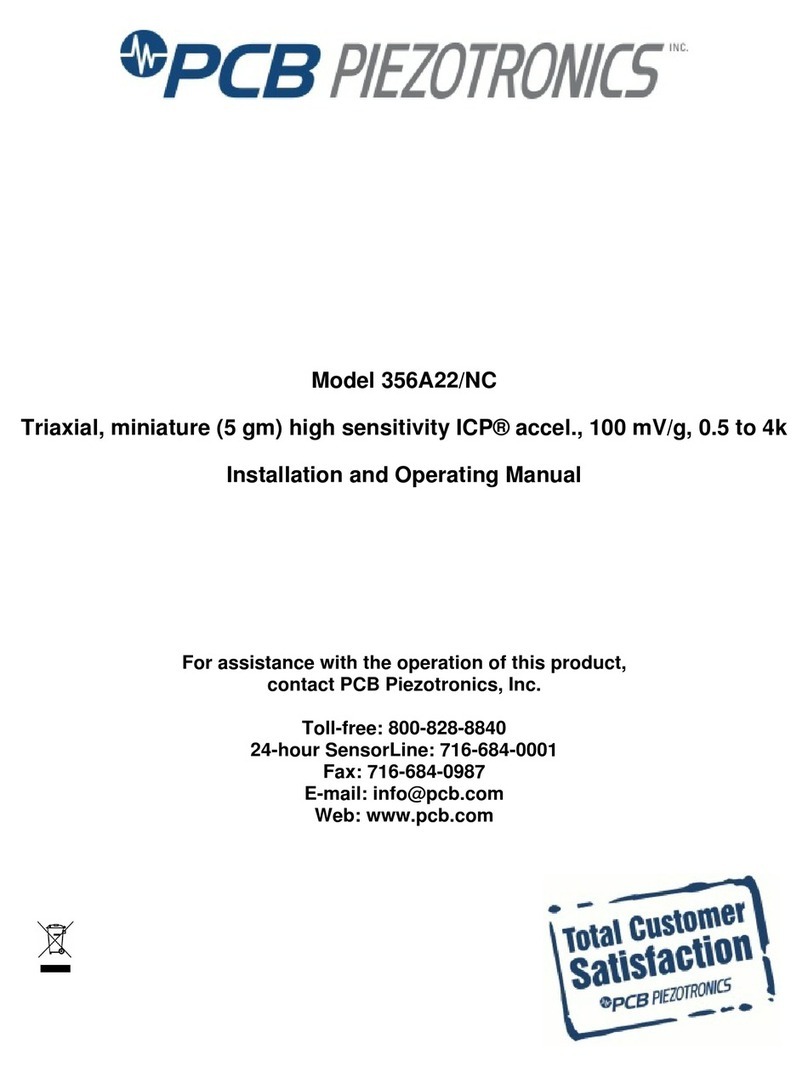
PCB Piezotronics
PCB Piezotronics 356A22/NC Installation and operating manual
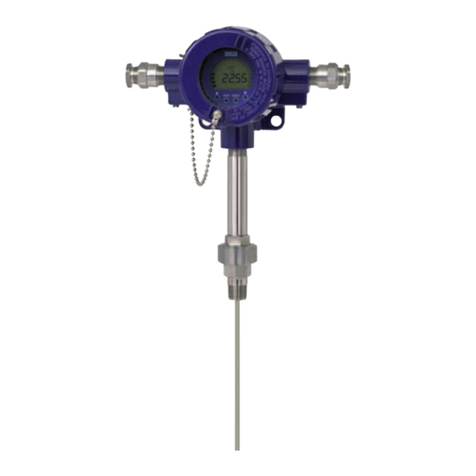
WIKA
WIKA TR12 Series Additional operating instructions

Kewtech
Kewtech KTD40 user manual
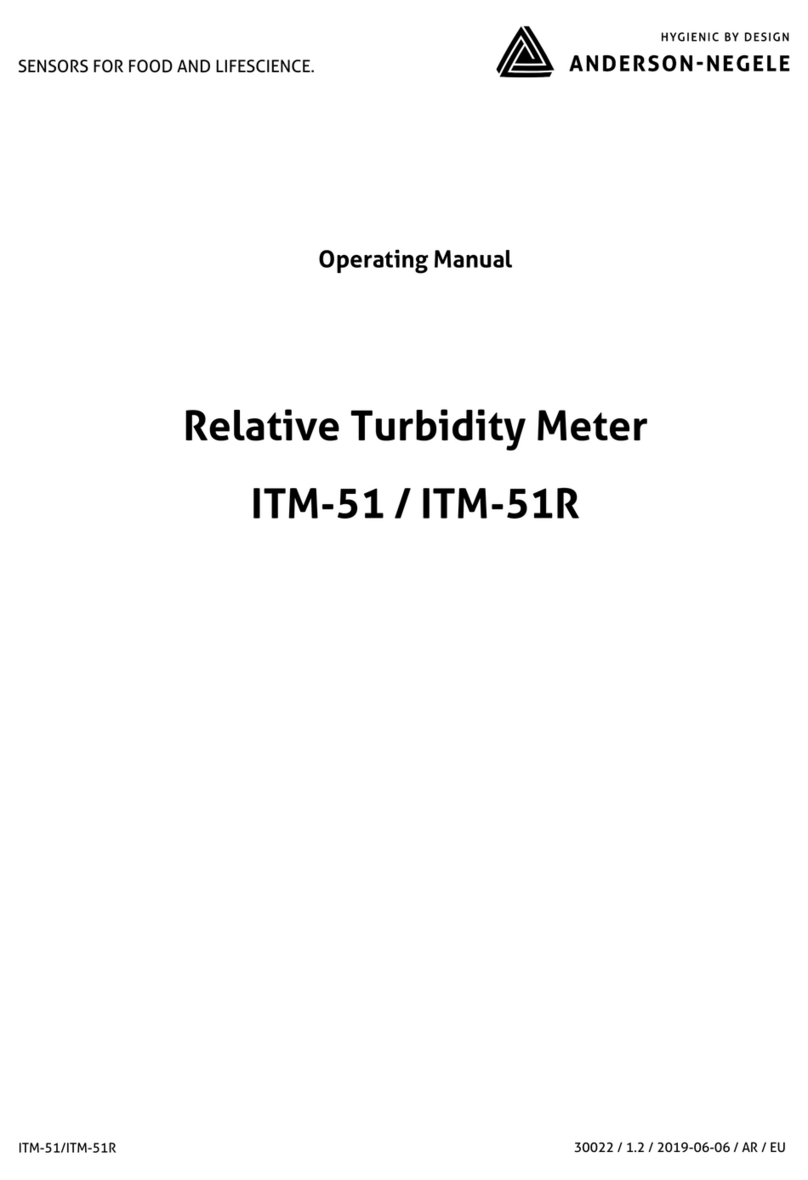
ANDERSON-NEGELE
ANDERSON-NEGELE ITM-51R operating manual

TEL
TEL AFA4000/1 Installation and operating manual
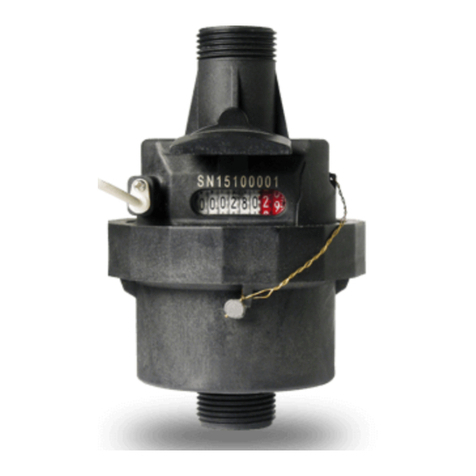
Assured Automation
Assured Automation WM-PD Series Use & care manual
